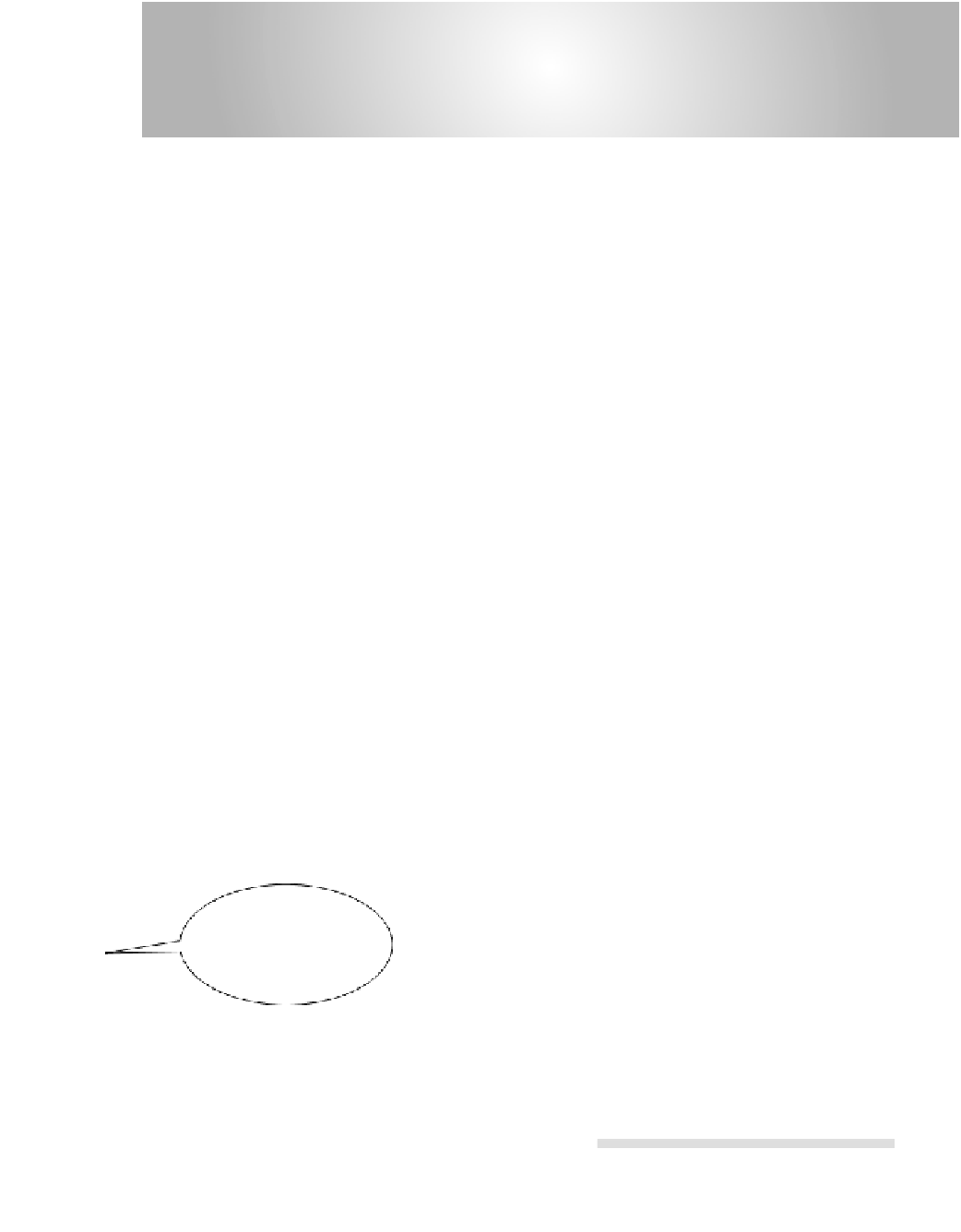Geoscience Reference
In-Depth Information
3 Forces and dynamics
b
3.1
Quantity of motion: momentum
3.1.1
Linear momentum
In Spanish, however,
cantidad de movimiento
or “quantity
of motion” is a commonly expressed synonym for momen-
tum. We see immediately the significance of the word
con-
jointly
in Newton's definition, for similar values of
p
Momentum, symbol
p
, is the product of the mass,
m
, of any
substance (gas, liquid, or solid) and its velocity,
u
. Hence
dimensions are MLT
1
; there are no special units for
momentum. We get the importance of the concept most
directly from Newton's Definition 2, translated from the
original Latin into the elegant English of the mid-nineteenth
century:
m
u
may be achieved as the consequence of either large mass
and small velocity or vice versa. It is thus instructive to
calculate the momentum of various components of the
Earth system; the dual roles of mass and velocity playing
off each other can produce some unexpected results
(Figs 3.2 and 3.3). For this reason it is also often instruc-
tive to express momentum per unit volume, given by
p
The quantity of motion of a body is the measure of it arising
from its velocity and the quantity of matter conjointly.
u
. Momentum can also be easily related to kinetic
energy,
E
k
(Section 3.3).
Linear momentum is a vector and is orientated through
a mass in the same direction as its velocity vector,
u
. Each
of the three Cartesian components of the velocity vector
will have its component part of momentum attached to it,
that is,
You may agree with us that the phrase “quantity of
motion” (Fig. 3.1) is a good deal more expressive and
unequivocal than the term in modern English language
usage, “momentum”; the obvious semantic confusion for
the beginner is with
moment
, as in moments of forces.
u
,
v
, and
w
.
0.5 kg “Bramley” cooking apple falling at velocity 10 m s
-1
… is
p
= 5
kg m s
-1
I called momentum
quantity of motion
- a much more suitable
name, don´t you think?
1 mm diameter spinning sand grain
impacts onto rocky desert floor…
Velocity 2 m s
-1
Mass 1.15
.
10
-5
kg
Rebound
(Elastic collision)
… is
p
= 2.3
.
10
-5
kg m s
-1
Fig. 3.1
Newton and his definition of momentum.
Fig. 3.2
On the momentum of apples and sand grains.












Search WWH ::

Custom Search